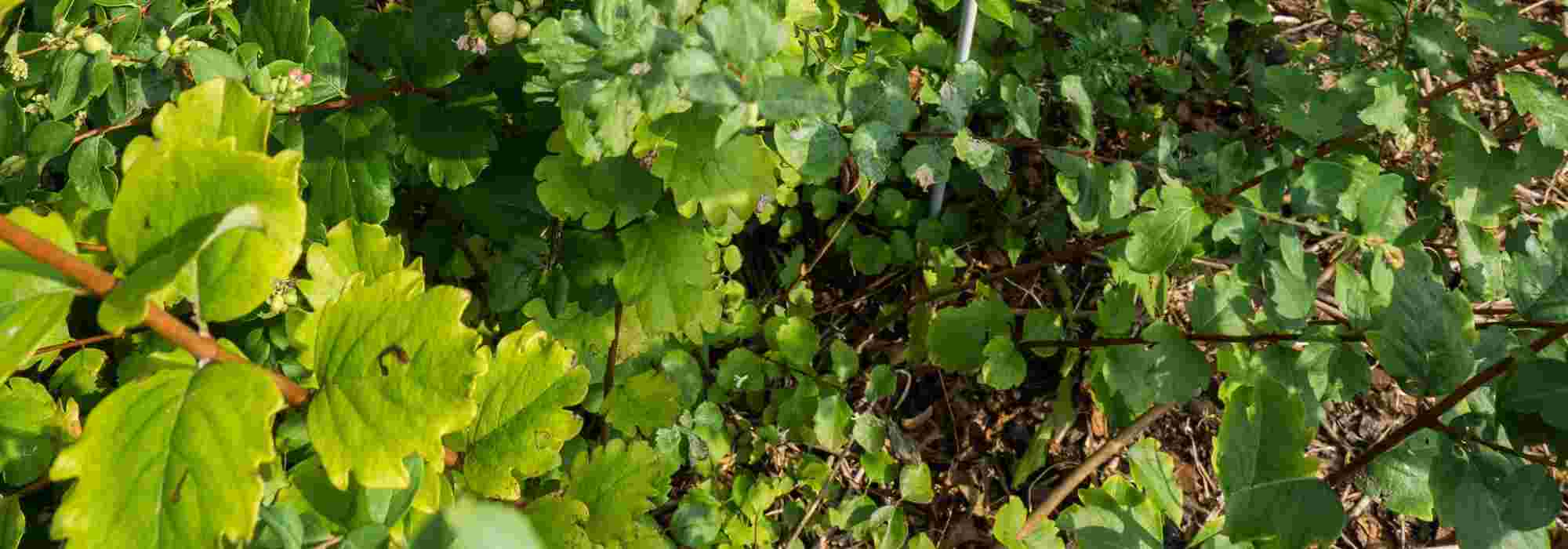
My bush is suckering. Why? What should I do?
Everything you need to know about suckering in trees and bushes
Contents
Some bushes in our gardens seem unwilling to stay put. Lilacs, blackthorns (sloes), sea buckthorns, Japanese kerria… and many others are spreading by sending their suckers all around them. Moreover, some fruit trees or flowering fruit trees also send up suckers directly from the rootstock.
A genuine blessing for some, this perfectly natural phenomenon can quickly become a calamity if left unchecked. But why do these bushes do this? Is it normal? How can it be remedied? Do you really have to leave the country after planting a sumac in your garden? Will that thicket of snowberries end up attacking the house?
Let’s take stock of suckering and shoots from trees and bushes!
Why is my bush sending out suckers? A little botany...
Any plant primarily seeks to reproduce: in nature as in your garden. Depending on circumstances, it will do so via its seeds of course, which is called sexual reproduction, but it can also do so via other techniques of vegetative propagation, therefore asexual, such as layering, stolons, propagation of rootstocks and suckering, …
A sucker is a perfect clone of the parent plant, genetically identical to it. It grows from the parent plant’s root meristem. The meristem is a tissue made of undifferentiated dividing cells, which means they can start growth at any time and for any function. As it develops the clone thus formed will have its own root system while remaining attached to the parent plant.
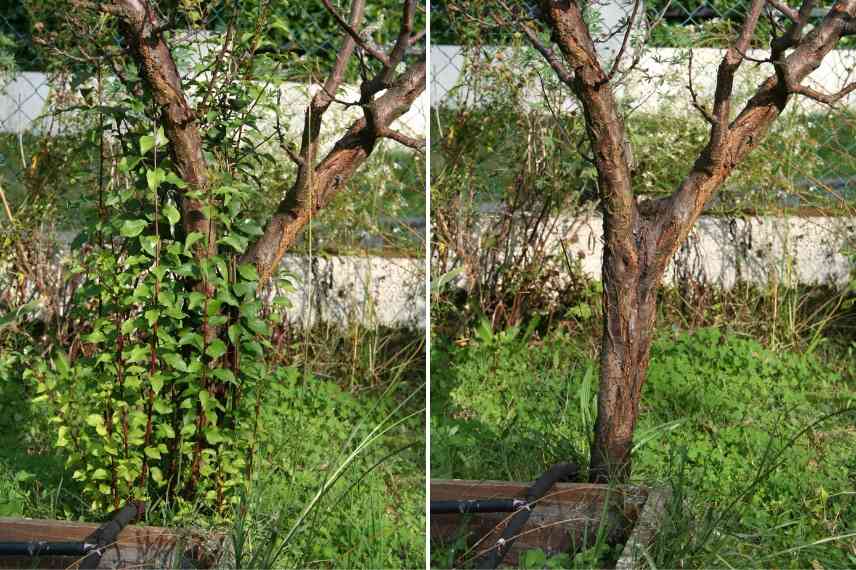
Suckers on rootstock of a cherry tree, before and after
Sexual reproduction allows genetic mixing and therefore increased resistance to diseases and pests. In contrast asexual reproduction (such as suckering) allows faster colonisation of an environment and enables competition with other species. The plant that has colonised a given environment most effectively can thus establish its dominance. That is why in nature high botanical diversity is possible only in very young or very poor habitats.
Suckering can also result from a reaction to stress: pruning, drought, soil work too close to the roots … and then the plant seems to think, “oh no, I’m doomed. Quick, quick, let’s make some offspring!” (without meaning to be anthropomorphic). Thus the species can continue to persist in an environment or… in your garden.
Similarly, a plant may sucker if growing conditions are no longer suitable: not enough water or nutrients, for example, because it has exhausted the soil. The plant then suckers to send its clones a little further away.
Advantages and disadvantages of sucker production for gardeners
Advantages
- A bush that produces many suckers makes it possible to quickly revegetate a neglected part of the garden. Examples: sea buckthorn, blackthorn, Cornus sanguinea and sericea, Sorbaria sorbifolia, …
- In a way, the mother plant multiplies its rooting points by creating clones that themselves root. A suckering bush therefore holds soil on a slope or bank very efficiently.
- It is obviously an excellent way to multiply favourite plants for your garden or a friend’s. Indeed, the plant thus produced is very vigorous and already rooted, unlike a cutting, for example. All that’s left is to detach it from its “mum” (see below).
- The suckering phenomenon is much used to create “forest” or Yose of bonsai. Simply bury a root of a suckering bush horizontally and wait for shoots to emerge vertically. You thus get a row of mini-trees (for purists, they should be an odd number) but with the same vigour since they come from the same root.
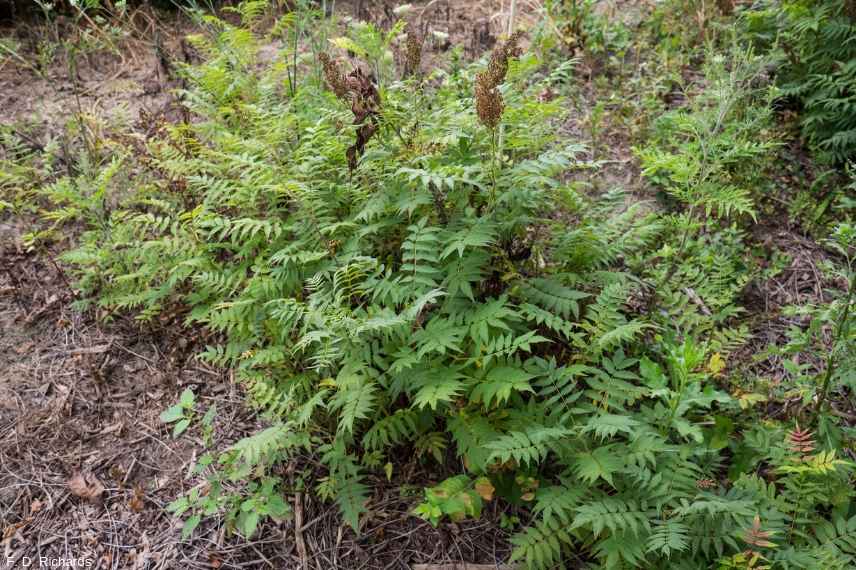
Suckers of Sorbaria sorbifolia ‘Sem’
Disadvantages
- Suckering bushes can be invasive by definition. It is therefore sometimes necessary to limit their vigour a little (see below).
- Suckers weaken the mother plant slightly by drawing off some of the water and nutrients. This is not a major problem if the bush is ornamental only but, in the case of fruit trees (apple trees, plum trees, …), it can reduce fruit production.
- Suckers or shoots sometimes emerge from rootstocks on fruit trees as well as on ornamentals. They should be removed or they may take over the main plant.
Discover other Shrubs
View all →Available in 0 sizes
Available in 1 sizes
Available in 1 sizes
Available in 1 sizes
Available in 1 sizes
Available in 1 sizes
Available in 1 sizes
Available in 1 sizes
Available in 1 sizes
Available in 1 sizes
What should I do if my bush is producing suckers?
How to remove a sucker?
Please note: operation is called suckering.
- Pruning
This is technique to favour for suckers that originate from a rootstock. Prune all shoots emerging from soil or from base of tree or bush. Sometimes you will need to dig a little into soil to be sure of cutting sucker at base. Be careful not to damage your tree.
- Mowing
A quicker technique if some suckers appear in your short grass meadow is simply to mow them. Obviously, do this while suckers are still young to avoid damaging your equipment.
- Plant in pot or place a rootstock barrier
For a naturally suckering bush such as sumac, for example, you can plant it in a large container. That way it will remain within a defined volume.
You can also use a rootstock barrier, allowing you to give bush more space.
Please note: although presenting same issue as suckering bushes, non-cespitose bamboos (running types such as Phyllostachys) do not use same colonisation technique. Rhizomes are underground stems that grow to find food elsewhere (mint is no better!), but they are not suckers arising from a root.
- Remove the sucker
This is slowest technique but most effective. It consists of separating sucker from mother plant. Instructions on how to do this are given just below.
How to recover a sucker?
- In spring, dig soil around sucker taking care not to damage roots of mother plant or those of sucker (check at this stage that it is indeed rooted).
- Ease young plant out carefully using a digging fork. Cut root still joining sucker to mother plant with a pruning shear or, if necessary, with a clean spade cut.
- Prune slightly above-ground part of sucker to prevent excessive water loss (as with a cutting).
- Plant in pot so roots can strengthen or plant straight into ground if plant is vigorous.
- Water well.

Sucker of Viburnum plicatum ‘Mariesii’ recovered
If you do not want to recover sucker, you can stop at step 2.
Some examples of suckering bushes
Many bushes naturally send up suckers. Some entire groves of poplars, sea buckthorn or blackthorn, for example, originate solely from the root system of a single mother plant. Under the tropics, entire mini-forests are sometimes composed of just a single individual. In the Mojave Desert in California, a single individual of Larrea tridentata has produced a gigantic circular grove and is over 12,000 years old.
In the garden, you may encounter suckering bushes such as lilac, snowberry (Symphoricarpos), Cornus sanguinea and Cornus sericea, sumacs (although there are non-suckering varieties), sea buckthorn, blackthorn, hazel, wild cherry, Edgeworthia, Sorbaria sorbifolia (the ‘Sem’ variety does not produce many suckers), Japanese kerria, mahonia, false acacia (black locust), … It’s up to you to decide whether these suckers bother you or whether they would be welcomed by someone you know.
- Subscribe!
- Contents
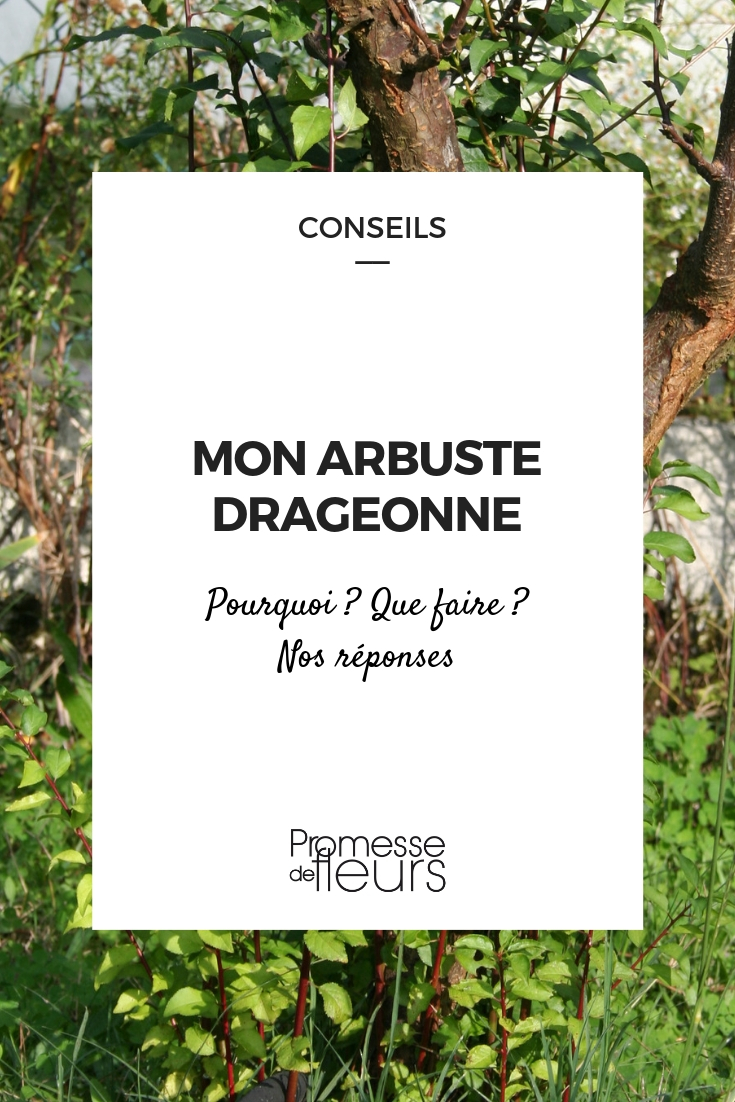

































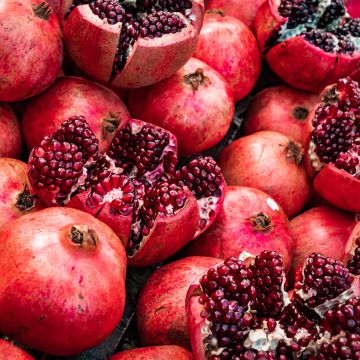
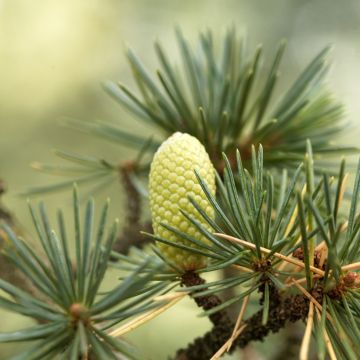
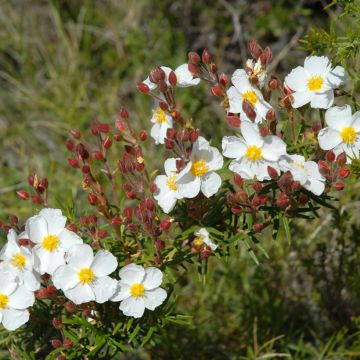
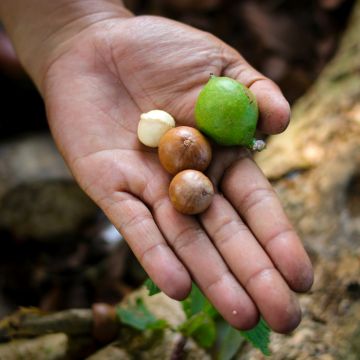

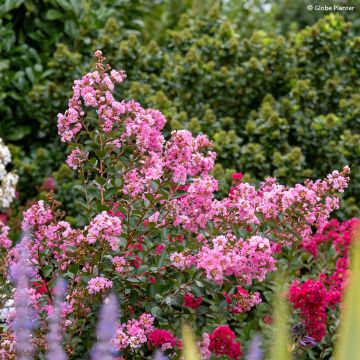
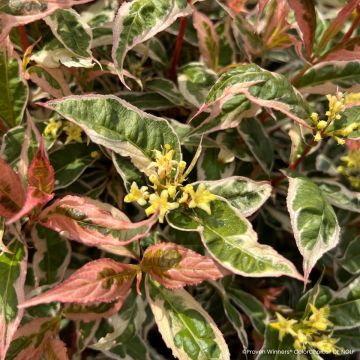
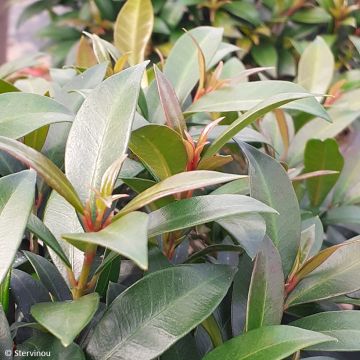
Comments